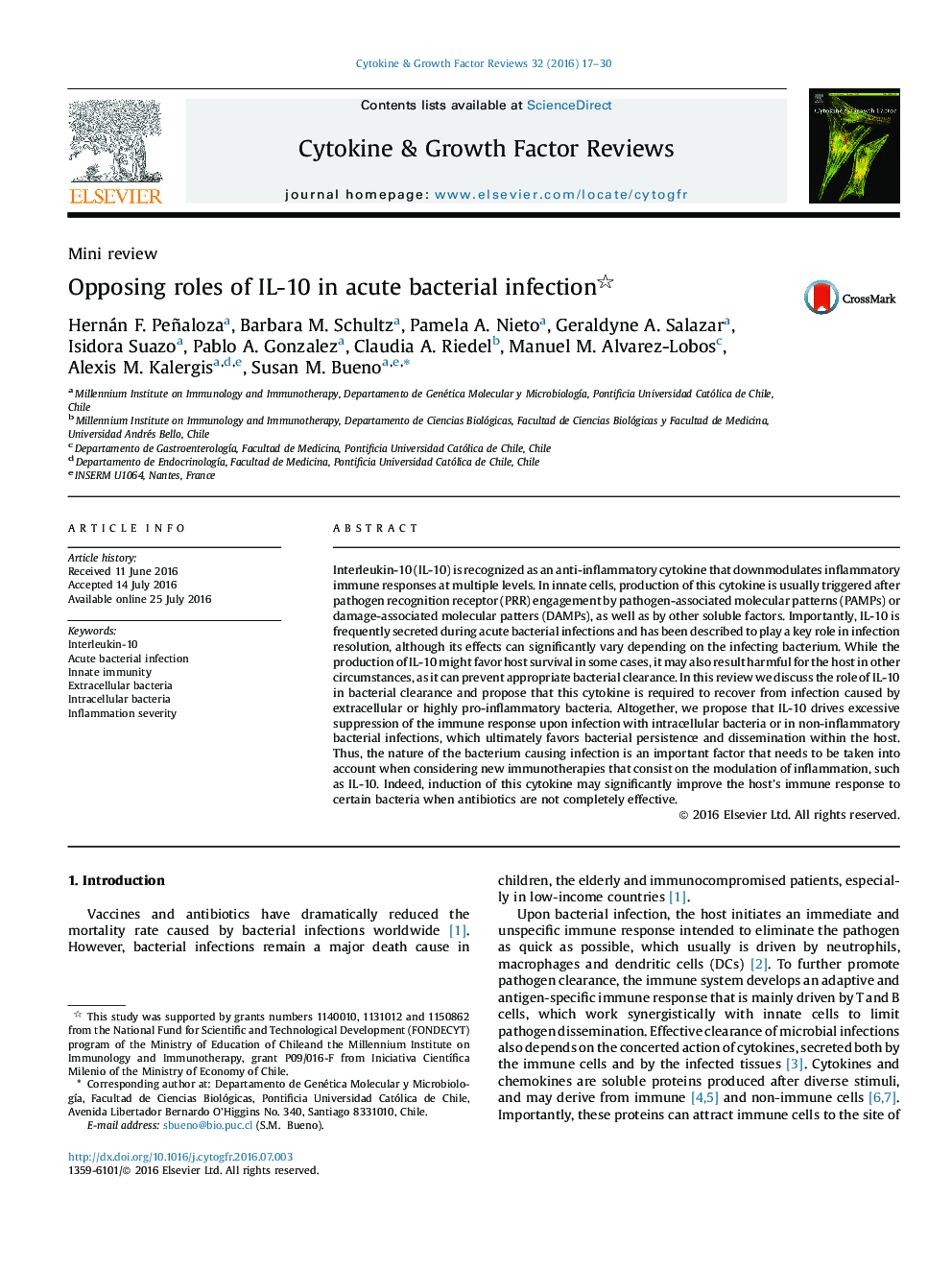| کد مقاله | کد نشریه | سال انتشار | مقاله انگلیسی | نسخه تمام متن |
|---|---|---|---|---|
| 5531215 | 1549492 | 2016 | 14 صفحه PDF | دانلود رایگان |

- IL-10 production is regulated by epigenetic, transcription factors and post-transcriptional mechanisms, ensuring a balanced production during bacterial infections.
- During infections with extracellular or highly inflammatory bacterial pathogens, IL-10 production facilitates host survival.
- During infections with intracellular or low inflammatory bacterial pathogens, IL-10 production facilitates bacterial dissemination, increasing death rate.
- Predicting the effect of the presence/absence of IL-10 during bacterial infections could improve treatment efficacy as well as facilitates the development of new drugs and therapies.
Interleukin-10 (IL-10) is recognized as an anti-inflammatory cytokine that downmodulates inflammatory immune responses at multiple levels. In innate cells, production of this cytokine is usually triggered after pathogen recognition receptor (PRR) engagement by pathogen-associated molecular patterns (PAMPs) or damage-associated molecular patters (DAMPs), as well as by other soluble factors. Importantly, IL-10 is frequently secreted during acute bacterial infections and has been described to play a key role in infection resolution, although its effects can significantly vary depending on the infecting bacterium. While the production of IL-10 might favor host survival in some cases, it may also result harmful for the host in other circumstances, as it can prevent appropriate bacterial clearance. In this review we discuss the role of IL-10 in bacterial clearance and propose that this cytokine is required to recover from infection caused by extracellular or highly pro-inflammatory bacteria. Altogether, we propose that IL-10 drives excessive suppression of the immune response upon infection with intracellular bacteria or in non-inflammatory bacterial infections, which ultimately favors bacterial persistence and dissemination within the host. Thus, the nature of the bacterium causing infection is an important factor that needs to be taken into account when considering new immunotherapies that consist on the modulation of inflammation, such as IL-10. Indeed, induction of this cytokine may significantly improve the host's immune response to certain bacteria when antibiotics are not completely effective.
Journal: Cytokine & Growth Factor Reviews - Volume 32, December 2016, Pages 17-30